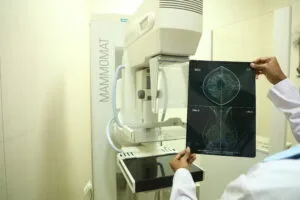Hemoglobinopathies : Laboratory Diagnosis (Suburban Medical Journal)

Hemoglobinopathies are a group of inherited disorders in which there is abnormal production or structure of the globin moiety of the hemoglobin molecule. Hemoglobinopathies, which include the thalassemias and structural hemoglobin (Hb) variants, are the most common group of autosomal recessively inherited monogenic disorders of Hb production and pose a significant health burden in India.(1,2)
There are thousands of genetic abnormalities possible in the globin genes, many of which are asymptomatic. Proper and timely diagnosis is imperative to ensure optimal treatment and also to offer genetic counselling to those who may be carriers. Hemoglobinopathies can be broadly classified into:
- Variant hemoglobins
- Thalassemias
Variant Hemoglobins
These are caused by a qualitative defect in the genetic code that leads to structural change in the hemoglobin molecule. Most alpha and beta globin chain variants are clinically silent and are discovered incidentally or during screening of family members of a patient.(3) A few variant hemoglobins are capable of causing severe disease, especially in homozygous state (e.g. HbS) or when inherited in conjunction with another variant or a thalassemia mutation. Common examples of variant hemoglobins in India include HbS, HbE and HbD. These hemoglobinopathies are prevalent in certain geographies and communities, e.g. HbE in the north eastern states of India.(4)
- Change in oxygen affinity – variant hemoglobins can have either decreased or increased affinity to hemoglobin. Low affinity hemoglobins can cause cyanosis (eg: Hb Titusville, Hb Kansas, Hb Beth Israel) and high affinity hemoglobins can cause polycythemia (eg: Hb Olympia, Hb Chesapeake).(5)
- Reduced stability – some variant hemoglobins can cause the hemoglobin molecule to precipitate and form Heinz bodies (eg: Hb Zurich, Hb Koln) when exposed to oxidative stress.(4)
- Change in physical properties – variant hemoglobins can have altered solubility leading to crystallization/polymerization of the hemoglobin (eg: HbS – polymerization, HbC – crystallization).(4)
- Oxidation of the heme iron – mutations which affect the heme binding site can cause oxidation of the heme iron from a ferrous to a ferric state causing resultant methemoglobinemia (eg: HbM).(4)
Thalassemias
These are quantitative defects of Hb resulting in reduced levels of a globin chain in red cells. As a result, one or the other globin chains will accumulate, form aggregates and then precipitate, leading to premature intramedullary or intravascular destruction of RBCs.
- Beta thalassemia – These cases have reduced levels of beta globin chains caused by point mutations that disrupt regulatory elements of beta globin gene expression. The mutations are expressed as β+ if some amount of beta globin is produced and as β0 if there is no beta globin production.(4)
- Alpha thalassemia – These cases have reduced levels of alpha globin chains caused by deletions of one or both alpha globin genes.(4)
Mutations in gamma and delta globin genes can also cause thalassemic disorders ranging from clinically silent (Hereditary persistence of fetal hemoglobin – HPFH) to symptomatic (delta-beta thalassemia). Rarely, thalassemic mutations can result in altered hemoglobin structure (eg: Hb Lepore). An example of delta globin chain mutation not uncommonly seen in India is HbA2 Saurashtra.(6)
Diagnosis of Hemoglobinopathies
The laboratory diagnosis of hemoglobinopathies has evolved quite a bit over the years, progressing from gel electrophoresis all the way to next generation sequencing.
“In most cases, a well elicited family history and parental testing in combination with HPLC is sufficient for definitive diagnosis of common Hb variants.”(4)
There are 2 broad categories of tests for diagnosis/screening of hemoglobinopathies:(4)
- Protein-based methods
- DNA-based methods
Protein-based methods
These are the methods of choice in the present day, with more advanced DNA based tests being used only for cases which cannot be resolved using protein-based methods. The routinely used protein-based methods are as follows:(4)
- HPLC (High performance liquid chromatography)
- IEF (Isoelectric focusing)
- CE (Capillary electrophoresis)
- Gel electrophoresis
- Cellulose acetate electrophoresis
Table 1 – Comparison of Protein-Based Methods(4)
| Advantages(4) | Disadvantages(4) | |
| High performance liquid chromatography (HPLC) |
|
|
| Isoelectric focusing (IEF) |
|
|
| Capillary electrophoresis |
|
|
| Electrophoresis (cellulose acetate, citrate agar) |
|
|
DNA-based methods
These are almost never used as first-line tests. They do have immense significance and potential in prenatal and newborn screening. The commonly used methods are:(4)
- Gap polymerase chain reaction
- Traditional DNA sequencing (Sanger)
- Multiplex ligation-dependent probe amplification (MLPA)
- Next-generation sequencing (NGS)
Table 2 – Comparison of DNA-Based Methods(4)
| Advantages(4) | Disadvantages(4) | |
| Gap polymerase chain reaction (PCR) |
|
|
| Traditional DNA sequenc- ing (Sanger) |
|
|
| Multiplex ligation-dependent probe amplification(MLPA) |
|
|
| Next-generation DNA sequencing (NGS) |
|
|
Who should be screened for Hemoglobinopathies?
It is recommended that screening for hemoglobinopathies should be done in the following situations with the method of choice being HPLC:(1)
- Premarital screening
- Antenatal screening
- Preconception screening
- Neonatal screening
- Preoperative/pre-anesthesia screening
References:
- Ghosh K, Colah R, Choudhry V, Das R, Manglani M, Madan N, et al. Guidelines for screening, diagnosis and management of hemoglobinopathies. Indian J Hum Genet. 2014;20(2):101.
- Centers for Disease Control and Prevention (CDC), Asscoiation of Public Health Laboratories (APHL). Hemoglobinopathies: Current Practices for Screening, Confirmation and Follow-up [Internet]. Centers for Disease Control (CDC); 2015. Available from: https://www.cdc.gov/ncbddd/sicklecell/documents/nbs_hemoglobinopathy-testing_122015.pdf
- Gupta AD, Nadkarni A, Mehta P, Goriwale M, Ramani M, Chaudhary P, et al. Phenotypic expression of HbO Indonesia in two Indian families and its interaction with sickle hemoglobin. Indian J Pathol Microbiol. 2017 Mar;60(1):79–83.
- Hoppe C, Mentzer WC, Tirnauer JS. Methods for hemoglobin analysis and hemoglobinopathy testing. In: UpToDate. 2.0. Wolters Kluwer Health; 2018.
- Das Gupta A, Hariharan P, Daruwalla M, Sidhwa K, Pawar R, Nadkarni A. Hemoglobin Titusville [α2 Codon 94 G>A]: A Rare Alpha Globin Chain Variant Causing Low Oxygen Saturation. Indian J Hematol Blood Transfus. 2019 Jul;35(3):593–5.
- Das Gupta A, Ramani M, Sidhwa K, Pawar R, Nadkarni A. Hemoglobin A2 Saurashtra – a Delta Globin Chain Variant That Can Mask the Diagnosis of Beta Thalassemia Trait. (Unpublished).



